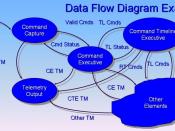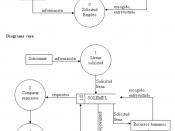Software Design Models
Modeling is the designing of a software application before coding. It plays an important role in the development of the application; they are the blueprints to software design. Modeling offers a way to visualize your design and check it against requirements before your start writing code. This can lead to a very successful system or application that will not fail to meet all its requirements on time and on budget. You can model just about any type of software application, but what type of model you use depends on your needs and functions it will be performing. There are several models available; they are Unified Modeling Language (UML), Entity Relationship Diagrams (ERDS) and Data Flow Diagrams (DFD). After hours of research I have chosen Data Flow Diagrams (DFD).
Data Flow Diagrams (DFD)
Data Flow Diagramming is a means of representing a system at any level of detail with a graphic network of symbols showing external entities, data flows, data stores, and data processes.
External entities - sources or destinations outside the specified system boundary
Data flows - movement of data in the system
Data stores - data repositories for data that is not moving
Processes - transforms of incoming data flow(s) to outgoing data flow(s)
Figure 1 below show the four basic symbols use in Data Flow Diagrams.
Figure 1
The purpose of data flow diagrams is to provide a bridge between users and systems developers. The diagrams are:
Graphical, eliminating thousands of words;
Logical representations, modeling WHAT a system does, rather than physical models showing HOW it does it;
Hierarchical, showing systems at any level of detail; and
Jargon less, allowing user understanding and reviewing.
As you see in Figure 2 below, the data flows to and from the external entities using paths to show...


